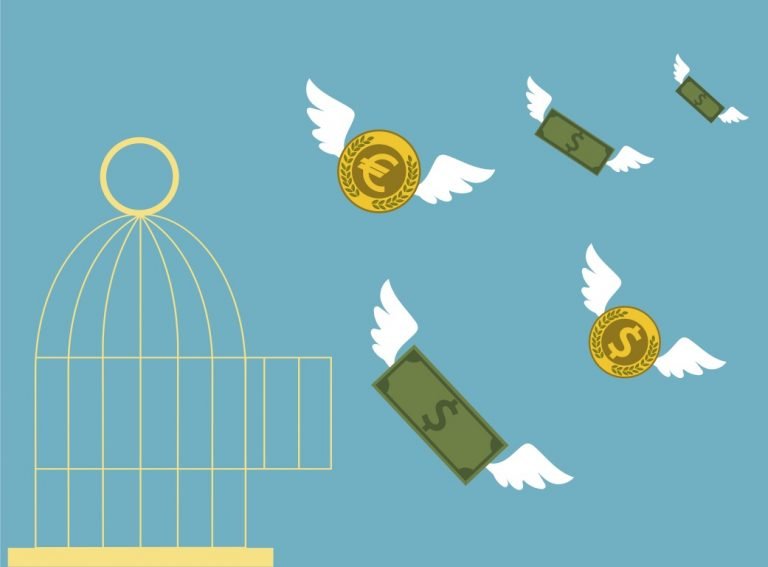Key Takeaways
- One of the most common questions freelancers think about, but don’t always ask, is how much they can charge
- Transparency is critical to building a successful business
- Here’s how to figure out how much you can expect to make freelancing
It’s supposedly taboo to talk about money. But if you’re thinking about becoming a freelancer, you should know if it’s going to be a viable career path.
How much you earn depends on the type of communications freelancer you are and your lifestyle.
It also depends on your years of experience, performance, how actively you network, how solid your clients are, and how much you’re willing to work. Let’s break this down a bit more.
There are seven types of communications freelancers but most fall under the category of full timers, part timers, or those freelancing in between full-time corporate or agency positions.
In this post, we focus on the earnings of a hypothetical full-time communications freelancer working in technology, one of the most lucrative industries. Let’s call him Lance.
Billings Versus Earnings
Lance is based in Boston and has ten years of communications experience in the tech industry. Prior to his last job as director of communications at a startup, he was an agency account manager. Lance knows everybody in the IoT space, is a great writer, and excels at counseling executives. As a freelancer, Lance has three retainer clients. His retainers range between $3-$7K a month. Occasionally, he picks up subcontractor work from his former agency ranging from $500-$1000 per month, but it’s not steady.
On paper, Lance is billing an estimated $15-$18K a month, on average. However, his earnings are not $180K-$200K+ per year. To figure out what Lance is earning, let’s estimate his taxes based on IRS tax brackets, along with health insurance costs and recommended retirement savings. For taxes, we’ll round it off by subtracting one third of Lance’s billings. For health insurance, we’ll assume Lance is a healthy single guy in his mid 30’s and is paying $375 per month, or $4500 a year for healthcare. He’s funding his own retirement by putting aside $19,500 annually.

Estimated Earnings
These estimates are based on three retainer clients for 12 months with additional revenue coming in through separate project work.
Low End
Billings
$180K x 32% (taxes)
Taxes
$57,600
Health Insurance
$4200
Retirement
Take home pay
$19,500
$98,700
Middle
Billings
$210K x 35% (taxes)
Taxes
$73,500
Health Insurance
$4200
Retirement
$19,500
Take home pay
$112,800
High End
Billings
240K x 35% (taxes)
Taxes
$84,000
Health Insurance
$4200
Retirement
$19,500
Take home pay
$132,300
Estimates After Losing the Biggest Client

Let’s imagine that Lance’s biggest client ($7K/month) ended the contract mid-way through the year. Here’s how his estimated earnings would look.
Billings
138K x 24% (taxes)
Taxes
$33,120
Health Insurance
$4,200
Retirement
$19,500
Take home pay
$81,180
Arguably, Lance could increase his agency project work or replace the lost business before the end of the year. Yet when it comes to freelancing, it’s best to be conservative in your estimates and factor the unknown into your earnings.
Estimated Earnings for Full-Time Employment
We could compare Lance’s billings with earnings data provided by Indeed.com on the average annual salary for a U.S.-based communications director in the tech industry. That ranges from $86K at the low end to $201K at the highest end, which averages out to $143K a year in earnings. However, based on conversations with Boston-based VPs that are hiring directors of communications, we’ll adjust Lance’s salary estimate to range from $120K on the lower end to $160K on the higher end.
Using the Salary Paycheck Calculator from ADP, let’s look at what Lance would earn as a director of communications at a Boston tech company. Lance is paid monthly; his employer takes taxes out of his paycheck and supplements part of his health insurance. According to the Kaiser Family Foundation, the average single employee pays $1213 annually for health insurance. Lance’s employer also offers a 401K plan, which matches 50 percent of his contributions up to six percent.
Example: Boston Based Director of Communications
Below are estimated annual earnings for a full-time director of communications at a Boston based tech company.

Low End
Middle
High End
Salary: 120K x 24% (taxes)
Salary: $140K x 24% (taxes)
Salary: $160K x 32% (taxes)
Taxes $28,800
Taxes: $33,600
Taxes: $51,200
Health Insurance: $1213
Health Insurance: $1213
Health Insurance: $1213
Retirement: $12,300
Retirement: $12,300
Retirement: $12,300
Take home pay: $77,687
Take home pay: $105,187
Take home pay: $95,287
These numbers are back-of-the-envelope calculations and are presented only as a guideline. It’s recommended that you work with a tax professional and create your own personalized earnings calculator to determine your monthly and annual expenses and earnings.
How Freelancers Can Save More for Retirement

When you’re self-employed, you can potentially save more for retirement each year.
For example, let’s say you’ve set up your business to be an LLC. You can contribute to your retirement savings as both the employer and the employee.
As an employee, let’s imagine Lance puts aside $19,500 each year for his retirement. As the employer, Lance can put away an additional 25% into his retirement each year, up to $57,000.
Of course, you’ll want to talk to your tax advisor about setting up your 401K or Simplified Employee Pension (SEP) IRA.
Three More Ways Freelancers Save Money
Since we’re on the subject of finances, here are three ways that freelancing pays off in overall cost savings.
- Commuting: You’ll spend less on gas and car maintenance.
- Wardrobe: While most work environments are casual, you’ll find yourself spending less on your wardrobe. Not to mention the time savings previously spent trying to pull an outfit together.
- Dining: Even if you brown bagged your lunch every day, overall, you’ll end up saving by eating more meals at home.
Earnings aside, there are other factors that freelancers can’t put a price on and it’s what keeps them doing what they do. Those include work environment, choice of projects and clients, and flexibility.



